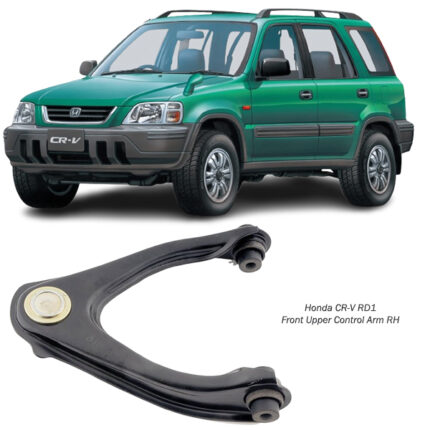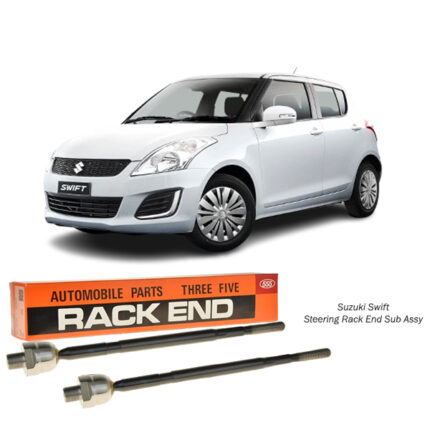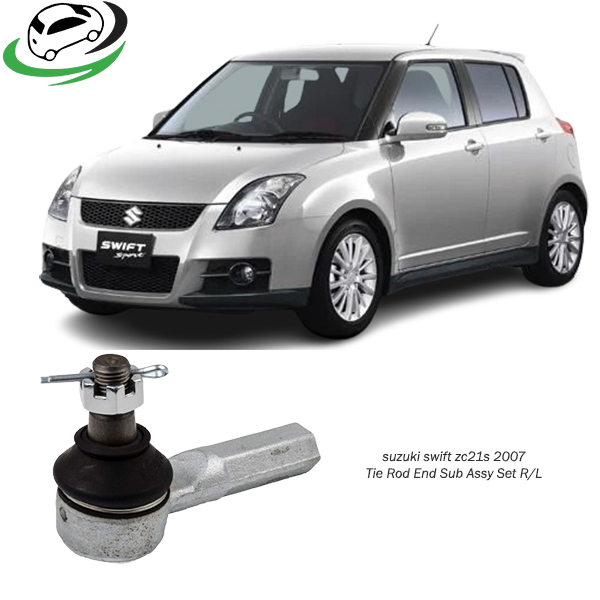-7%
Get Suzuki Swift ZC21s 2007 Tie Rod End Sub Assy Set SE7561 in Kenya
The tie rod end sub assembly, often referred to simply as the tie rod end, is a crucial component of a vehicle’s steering system. It connects the steering rack to the steering knuckle, enabling the driver to steer the vehicle effectively. This detailed exploration of tie rod ends will cover their structure, function, types, maintenance, and the importance of ensuring they are in optimal condition.
1. Understanding the Tie Rod End
The tie rod end plays a vital role in steering dynamics, acting as a pivot point that transmits the steering motion from the steering column to the wheels. Here are its key functions:
- Steering Control: The tie rod end allows for the adjustment of the angle of the wheels in response to the driver’s input, enabling smooth and controlled steering.
- Suspension Alignment: It helps maintain the correct alignment of the wheels, which is critical for optimal vehicle handling, tire wear, and overall driving safety.
- Vibration Absorption: The tie rod end absorbs shocks and vibrations from the road, providing a smoother ride by isolating some of the impacts from reaching the steering wheel.
2. Components of the Tie Rod End Sub Assembly
The tie rod end consists of several essential components:
- Ball Joint: The ball joint is the central part of the tie rod end, allowing for the movement necessary for steering. It features a spherical bearing that enables the steering knuckle to pivot freely.
- Housing: The housing encases the ball joint and connects the tie rod end to the steering mechanism. It is typically made of forged steel or aluminum to provide strength and durability.
- Dust Boot: This rubber or plastic cover protects the ball joint from dirt, moisture, and debris, which could lead to premature wear or failure.
- Adjustment Sleeve: The adjustment sleeve allows for fine-tuning of the steering alignment. It connects the inner tie rod end (attached to the steering rack) and the outer tie rod end (attached to the steering knuckle) to facilitate adjustments.
3. Types of Tie Rod Ends
Tie rod ends come in various types, each suited for specific applications and vehicles:
- Outer Tie Rod Ends: These are typically located at the outermost end of the steering linkage, connecting the tie rod to the steering knuckle. They experience more wear due to exposure to the elements and road conditions.
- Inner Tie Rod Ends: Positioned closer to the center of the vehicle, these connect to the steering rack. They are usually less exposed to road debris but still play a crucial role in steering performance.
- Adjustable Tie Rod Ends: Some tie rod ends have built-in adjustability features, allowing for easier alignment adjustments. This is particularly useful in vehicles designed for racing or off-roading.
4. The Importance of Tie Rod Ends
Ensuring that the tie rod ends are in good condition is vital for several reasons:
- Safety: Worn or damaged tie rod ends can lead to steering instability, affecting the vehicle’s handling and increasing the risk of accidents.
- Tire Wear: Misaligned or failing tie rod ends can cause uneven tire wear. This not only shortens tire life but also negatively impacts fuel efficiency and handling.
- Comfort: Properly functioning tie rod ends contribute to a smoother ride. Any play or wear in the components can lead to vibrations and a rough driving experience.
5. Symptoms of a Failing Tie Rod End
Recognizing the signs of a failing tie rod end early can prevent more severe issues down the road. Here are common symptoms:
- Unusual Noises: Clunking or popping sounds when steering can indicate worn tie rod ends. This noise is often caused by the ball joint moving excessively within the housing.
- Loose Steering: If the steering feels loose or vague, it could signal a problem with the tie rod ends. The driver may experience difficulty in maintaining control of the vehicle.
- Uneven Tire Wear: Inspecting the tires regularly for uneven wear patterns can help identify issues with the tie rod ends or alignment.
- Vibration in Steering Wheel: Excessive vibrations while driving, particularly when turning, can indicate that the tie rod ends are failing.
6. Maintenance and Inspection of Tie Rod Ends
Regular maintenance and inspection of tie rod ends can help ensure optimal performance:
- Visual Inspection: Check for signs of wear, such as cracks in the dust boot, rust on the housing, or excessive play in the ball joint.
- Alignment Checks: During routine maintenance, have the alignment checked. Misalignment can lead to accelerated wear on tie rod ends.
- Lubrication: If the tie rod ends are not sealed units, ensure they are adequately lubricated. Insufficient lubrication can lead to premature wear.
- Professional Inspection: If you notice any symptoms of failure, have a professional mechanic inspect the tie rod ends. They can assess the condition and recommend replacement if necessary.
7. Replacement of Tie Rod Ends
When it comes time to replace tie rod ends, understanding the process and considerations involved can help ensure a successful replacement:
- Tools Needed: Basic tools for replacement typically include a socket set, wrenches, a torque wrench, and a tie rod end puller or separator.
- Safety Precautions: Always work on a secure vehicle using jack stands. Do not rely solely on a hydraulic jack.
- Removal Process:
- Loosen the locknut on the tie rod end.
- Use the tie rod end puller to separate it from the steering knuckle.
- Remove the inner tie rod from the steering rack.
- Installation of New Tie Rod Ends:
- Install the new inner tie rod end into the steering rack and secure it with the locknut.
- Connect the outer tie rod end to the steering knuckle and torque it to the manufacturer’s specifications.
- Adjust the alignment of the wheels if necessary.
8. Cost of Tie Rod End Replacement
The cost of replacing tie rod ends varies based on several factors, including:
- Type of Vehicle: Luxury or performance vehicles may have higher parts and labor costs due to the complexity of their steering systems.
- OEM vs. Aftermarket Parts: Original Equipment Manufacturer (OEM) parts tend to be more expensive than aftermarket options. While OEM parts guarantee a perfect fit, aftermarket parts can provide significant savings.
- Labor Costs: Professional labor rates vary by location, and the complexity of the replacement may influence the total cost. Expect to pay between $100 and $250 for labor, depending on the shop and vehicle type.
9. Conclusion
The tie rod end sub assembly is an integral part of any vehicle’s steering system, providing essential support and control. Regular maintenance, timely replacement, and proper inspection are crucial for ensuring safety and optimal performance. Understanding the role, components, and symptoms of a failing tie rod end empowers vehicle owners to take proactive steps to maintain their steering systems effectively. By investing time and resources into this essential component, you can ensure a smoother, safer driving experience for yourself and others on the road.
Follow us on Facebook for more parts.



